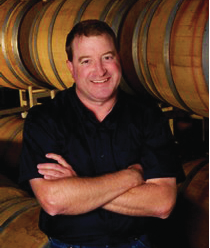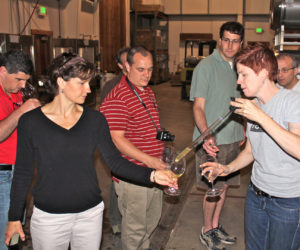A lot of home winemakers make small batches of wine that aren’t enough for a whole barrel. Thankfully there are lots of options for those of us making only a few gallons (or liters) at a time. In this article, two experts discuss their oak alternative choices.

Tristan Johnson, Brand Manager at MoreWine! & MoreWine! Pro in Concord, California. Tristan develops MoreWine! content, provides customer service for all wine customers and is an avid home beer, wine and meadmaker. He writes technical manuals and instructions for many MoreWine! products and also serves on WineMaker magazine’s technical review board.
I’ve used pretty much everything available on the market for oak alternatives in my winemaking except for barrel replicas. I tend to prefer cubes or stave segments — staves for larger volumes and cubes for smaller volumes. The cubes take longer to fully extract so there is less of a chance of overoaking, which can sometimes happen with oak powders and chips as they extract so quickly into the wine. Powders and chips have a lot of surface area that causes them to extract faster — you can add them to your wine at night and wake up in the morning to find your wine is overoaked if you’re not careful.
I recommend using oak alternatives any time you don’t have a large enough batch of wine to use a barrel but you still want to get that oak profile into the wine somehow. I don’t normally work with barrels smaller than 30 gallons (114 L) because the surface area gets exponentially larger as the barrel size gets smaller — this means that you can’t leave the wine in the barrel as long as you need to. In that respect there’s kind of no point to going to all of the trouble of working with a barrel if you can’t leave the wine in the barrel long enough to get the advantage of using it. This is one of the disadvantages to using oak alternatives, however — if you’re not making a large enough batch to use an oak barrel, you’re not going to get the full benefit of the barrel, which is pretty irreplaceable. The only thing you can do about that, however, is to make larger batches of wine, depending on how feasible that is for you.
One of the biggest mistakes I see with people using oak alternatives is gravitating toward lower cost alternatives. There is, of course, a price difference with all of these products (as there is with all winemaking ingredients and equipment), and the biggest risk of going low-cost is going to be with overoaking. The less expensive products tend to run a higher risk of over extraction. For example, if you use the oak powders or oak dust (which are not the same as enological tannins by the way), the surface area is much higher and you run the risk of over extraction.
Higher extraction also means that your winemaking timeline is compacted. If you’re going to try to extract what that product has to give within a two-week window, it’s hard to make a schedule to get the timing just right and taste the wine to be sure you’re on the right track. It is even harder to be as precise as you would like with such a narrow window of time.
There are a lot of advantages to oak alternatives, of course, and I encourage home winemakers to experiment. Testing small batches with oak alternatives allows you to accumulate a lot of data. One of the easiest things you can do to see what you like is to split a 5-gallon (19-L) carboy down to 1-gallon (3.8-L) jug factions and use different oak products in each jug. You can get French, American or Hungarian cubes with different toasts, so try several different types of oak at different toast levels to see how they behave in your wine. This can help you decide if you like the flavors of French oak or American oak at the same time, which is much harder to do with barrel-sized batches as you would be testing one type of oak barrel each year — not to mention that the fruit will be different each vintage.

Mike Robustelli, Winemaker for McManis Family Vineyards in Ripon, California. Mike has a degree in Enology from California State University, Fresno and has been part of the McManis Family Vineyards team since the 1999 harvest.
The advantages to barrel alternatives are that they tend to deliver more consistent aromatic and flavor profiles year in and year out. I believe the myriad manner in which alternatives are toasted allows producers to have greater time and temperature control during the toasting process, which results in the consistency of aromatics, flavors and mouthfeel that we are looking for.
Perhaps one shortcoming of alternatives is that if the oak has not been fully extracted, you do not want to discard it. However, not all alternatives lend themselves to quick or efficient means of being cleaned stored and then reused. We attempt to avoid such circumstances by making sure that an alternative is sized appropriately in order to ensure that when our planned aging is over, we are confident that the oak has been fully extracted. Additionally, if you use larger alternatives that will not be completely extracted in one aging cycle, planning ahead and having a new wine ready to move onto the oak immediately will remedy this.
If you’re trying out alternatives at home I would be most cautious of not overdoing it. Sneak up on the profile you are attempting to create. Adding more oak, or extending your aging time to achieve the desired oak profile is better than having a wine with too much oak.
The best experiment advice is to simply work with the alternatives. Most producers have sample kits with individual pieces that are designed to fully extract in one to three weeks in a 750-mL bottle of a neutral wine. Sampling the different products in this manner, will give you an idea of which producer may get you closest to achieving your desired result. Also, blending oak from different producers, regions and of varying toast levels in the same vessel can help you create unique oak profiles.







